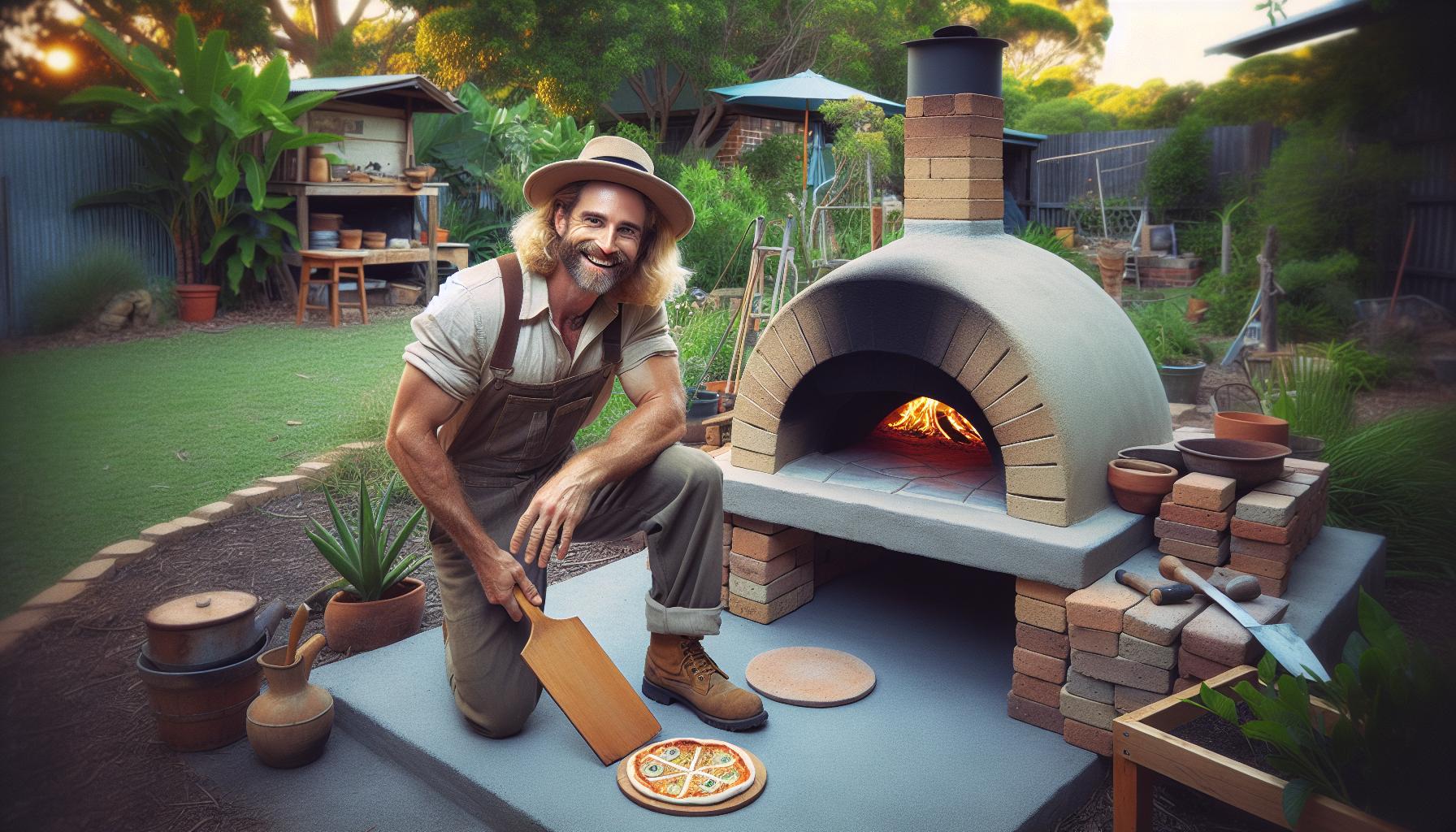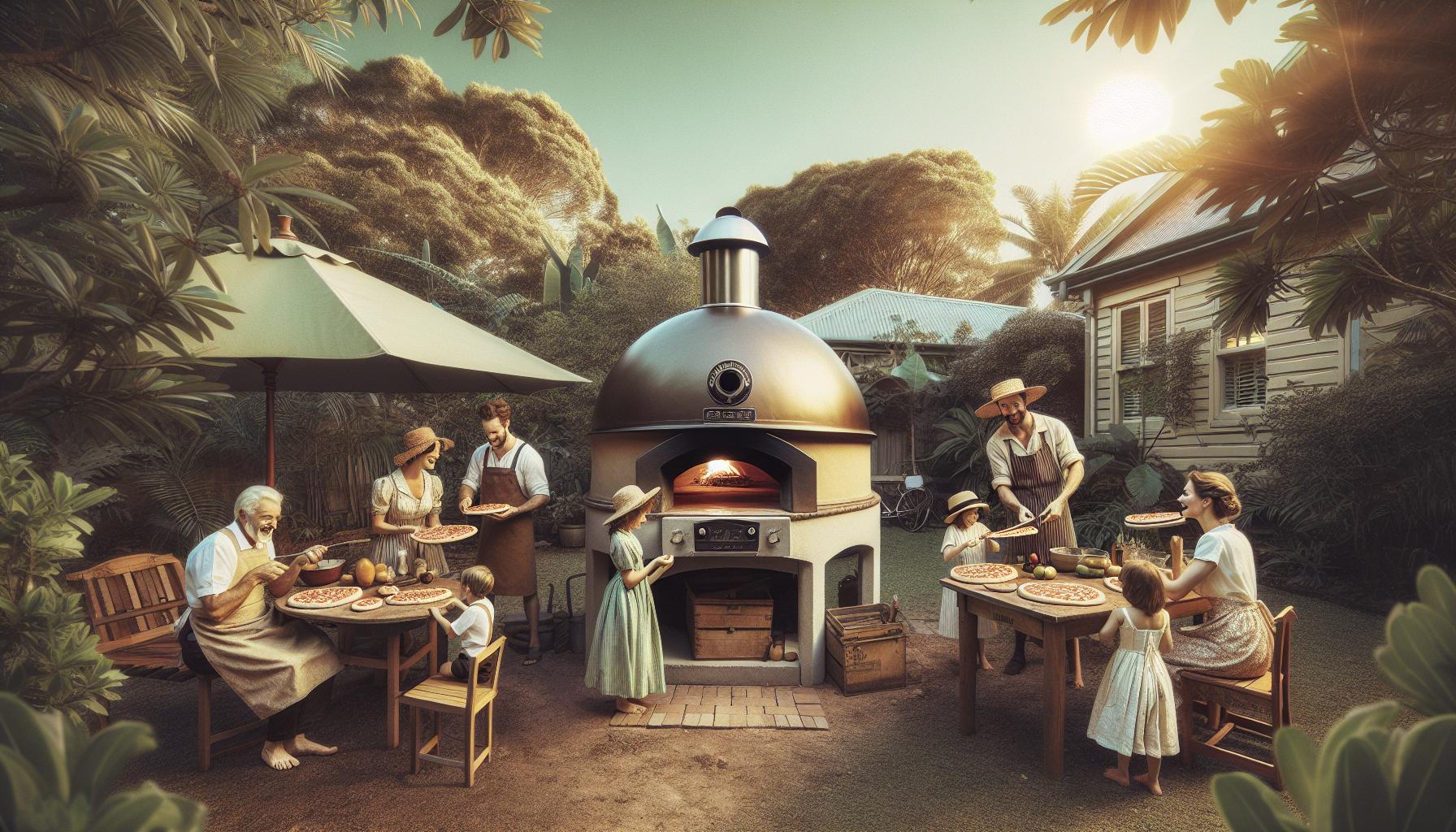
DIY Guide: How to Make a Wood Fired Pizza Oven at Home
There’s nothing quite like the taste of a wood-fired pizza, with its perfectly charred crust and smoky flavour. Building a wood-fired pizza oven not only elevates outdoor cooking but also creates a focal point for gatherings with family and friends. This guide will walk you through the essential steps to construct your own oven, ensuring delicious results and a rewarding DIY experience.
Essential Tools and Materials
Creating a wood-fired pizza oven requires specific tools and materials to ensure successful construction and operation. Proper preparation simplifies the building process and enhances the final product.
Tools Required
- Shovel: A large metal shovel is essential for handling hot coals and ash.
- Trowel: A trowel assists in applying mortar and manipulating bricks with precision.
- Level: A spirit level ensures that the oven’s base remains flat and stable.
- Hammer: A heavy hammer facilitates cutting and shaping bricks as needed.
- Brick Saw: A wet saw or masonry saw allows for precise cutting of bricks.
Materials Needed
- Firebricks: Firebricks withstand high temperatures and form the oven’s cooking surface.
- Mortar: Heat-resistant mortar binds bricks together and maintains structural integrity.
- Insulation: Materials such as ceramic fibre or vermiculite provide thermal insulation.
- Steel Plate: A steel plate serves as the oven ceiling to retain heat efficiently.
- Wood: Seasoned hardwood, such as oak or maple, is ideal for fuel due to its high heat output and low smoke production.
Planning Your Wood Fired Pizza Oven

Planning a diy pizza oven involves careful consideration of location and design. Proper planning leads to a successful and enjoyable outdoor cooking experience.
Choosing the Right Location
Selecting the ideal location for a wood-fired pizza oven is crucial. Considerations include:
- Proximity to the House: Place the oven within a reasonable distance from the kitchen for convenience.
- Ventilation: Ensure there’s enough space for smoke to dissipate without disturbing nearby areas.
- Sun Exposure: Choose a location that receives ample sunlight to avoid dampness and improve heating efficiency.
- Accessibility: Ensure easy access for wood storage and oven maintenance.
- Surface Stability: Establish the oven on solid, level ground to support its weight and structure.
Designing Your Oven
Designing the oven requires attention to both functionality and aesthetics. Key design elements include:
- Size: Determine the cooking area size based on anticipated usage and number of pizzas. A typical diameter is around 1 metre for family and friend gatherings.
- Materials: Select heat-resistant materials like firebricks and insulating layers for effective heat retention.
- Dome Shape: Choose a dome shape that promotes even heat flow. A semi-circular dome is common for better heat distribution.
- Opening Size: Ensure the oven opening is proportionate. A 60-centimetre width supports better airflow while retaining heat.
- Chimney Placement: Incorporate a chimney to direct smoke upwards, enhancing ventilation and reducing smoke accumulation.
Effective planning creates a functional, aesthetically pleasing wood-fired pizza oven that enhances outdoor culinary experiences.
Step-by-Step Construction Process
Building a wood-fired pizza oven involves several stages, from laying a stable foundation to installing a proper chimney. Each step is essential for creating a durable, efficient cooking appliance.
Building the Foundation
Start by choosing a flat, stable area for the foundation. Clear the site of any debris, then mark the dimensions of the oven’s base, typically 1.2 metres by 1.2 metres. Excavate to a depth of 15-20 centimetres and fill the hole with gravel to encourage drainage. Create a concrete slab using a mix of cement, sand, and gravel, ensuring it’s at least 10 centimetres thick. Allow the concrete to set for 48 hours. This foundation supports the oven’s weight and prevents movement over time.
Creating the Oven Structure
Construct the oven walls with firebricks, ensuring the inner layer is built using heat-resistant material. First, lay the bricks in a square shape to form the base, ensuring the corners are properly aligned. Once the base is complete, build the dome structure by layering bricks in a circular pattern, gradually tapering inward. Use heat-resistant mortar to secure the bricks and maintain airflow. A recommended height for the dome is around 1 metre for optimal heat retention. Allow the structure to dry for at least one week before the curing process.
Installing the Chimney
Select a location for the chimney that promotes efficient smoke venting, ideally opposite the oven door. Use a stainless steel or clay chimney flue for durability. Cut an opening at the top of the dome to fit the chimney. Secure the flue in place with mortar, ensuring it extends at least 30 centimetres above the dome for effective draft. Connect the rest of the chimney to the flue, maintaining upward slant to facilitate smoke exit. This installation improves ventilation and enhances the oven’s performance during cooking sessions.
Baking and Cooking Techniques
Cooking in a wood-fired pizza oven requires specific techniques to achieve optimal results. Understanding these techniques enhances flavour, texture, and overall quality of the pizza.
Preparing the Oven
Preparing the oven properly ensures consistent cooking. Start by building a hot fire using seasoned hardwood. Allow the flames to burn down until they produce a steady bed of glowing embers. This process typically takes 30 to 45 minutes. Once the oven reaches a temperature of around 400 to 500 degrees Celsius, use a pizza peel to spread flour to prevent sticking. Maintain the temperature by periodically adding wood. Monitor the temperature with an infrared thermometer for accuracy.
Tips for Perfect Pizza
For perfect pizza, several important factors must be considered:
- Dough Preparation: Use high-protein flour for a chewy crust. Allow the dough to rise for at least 24 hours in a cool place for better flavour.
- Sauce Choice: Opt for a simple sauce using crushed tomatoes, salt, and fresh basil. Avoid heavy sauces that can make the pizza soggy.
- Topping Selection: Limit toppings to two or three to prevent excess moisture. Choose fresh and high-quality ingredients.
- Cooking Time: Bake pizzas for 60 to 90 seconds. Watch for bubbling cheese and slight charring on the crust, indicating doneness.
- Oven Management: Rotate the pizza halfway through the cooking time for even cooking. Adjust wood quantity to maintain the desired temperature.
Each of these tips contributes to creating delicious wood-fired pizzas.
Maintenance and Care
Regular maintenance ensures the longevity and efficiency of a wood-fired pizza oven. Consistent care prevents issues that could compromise cooking performance or safety.
Regular Cleaning
Cleaning the oven after each use is essential. Remove ash and leftover debris from the oven floor to prevent any build-up. Use a brush with stiff bristles to clean the oven walls and dome. This process maintains the oven’s heat retention ability. Additionally, inspect the chimney for blockages and clean it regularly to ensure proper smoke ventilation. For best results, use a damp cloth to wipe down any surfaces, removing grease and residues.
Seasonal Care Tips
Seasonal maintenance protects the oven from weather elements. During colder months, cover the oven with a weatherproof tarp or insulated cover to prevent moisture buildup. Check the insulation for integrity, as exposure to rain or snow can degrade its effectiveness. In warmer months, examine the exterior for signs of wear and consider applying a protective sealant to maintain the surface. Regularly inspect the oven’s structure for cracks or damage, addressing issues immediately to prevent further deterioration.
Conclusion
Building a wood-fired pizza oven is an exciting project that combines craftsmanship with culinary delight. With the right tools and materials anyone can create a stunning addition to their outdoor space. Proper planning and execution are key to ensuring the oven not only looks great but also performs well.
Once built the oven opens up a world of delicious possibilities. Mastering the art of wood-fired cooking takes practice but the rewards are well worth the effort. Regular maintenance will keep the oven in top shape allowing for countless gatherings filled with mouth-watering pizzas.
Embracing this DIY venture not only enhances outdoor cooking experiences but also brings friends and family together. It’s a worthwhile investment that promises fun and flavour for years to come.
Frequently Asked Questions
What are the benefits of a wood-fired pizza oven?
A wood-fired pizza oven adds unique flavour and texture to pizzas, thanks to high temperatures and smoky aromas. It also creates a social cooking environment, perfect for gatherings and outdoor fun. Additionally, it typically cooks pizzas quickly, enhancing efficiency.
How do I choose the best location for my pizza oven?
Select a site that is close to your home for accessibility, well-ventilated to dissipate smoke, receives sunlight, and has stable ground. Ensure there is enough space for cooking and socialising around the oven.
What are the essential tools needed for building a pizza oven?
Key tools include a shovel, trowel, level, hammer, and brick saw. These tools will help you properly construct the oven’s foundation and structure to ensure durability and efficiency.
What materials are required to construct a wood-fired pizza oven?
You will need firebricks, heat-resistant mortar, insulation, a steel plate for the dome, and seasoned hardwood for fuel. These materials are vital for building an efficient and safe cooking area.
What is the process for building a wood-fired pizza oven?
Start by creating a stable foundation, usually a concrete slab. Then, construct the oven structure using firebricks, focusing on proper alignment. Finally, install a chimney to efficiently vent smoke, completing the build.
How can I achieve the perfect wood-fired pizza?
Use high-protein flour for the dough and keep toppings simple. Monitor oven temperature and cooking time closely for best results, aiming to maintain consistent heat for even cooking.
What maintenance is required for a wood-fired pizza oven?
Regular upkeep includes cleaning after each use by removing ash and debris, brushing the walls, and checking the chimney for blockages. Protect the oven during winter and inspect regularly for cracks or damage.
Can I use my wood-fired pizza oven for cooking other foods?
Absolutely! A wood-fired oven can be used for baking bread, roasting vegetables, and even cooking meats, making it a versatile addition to any outdoor kitchen.
